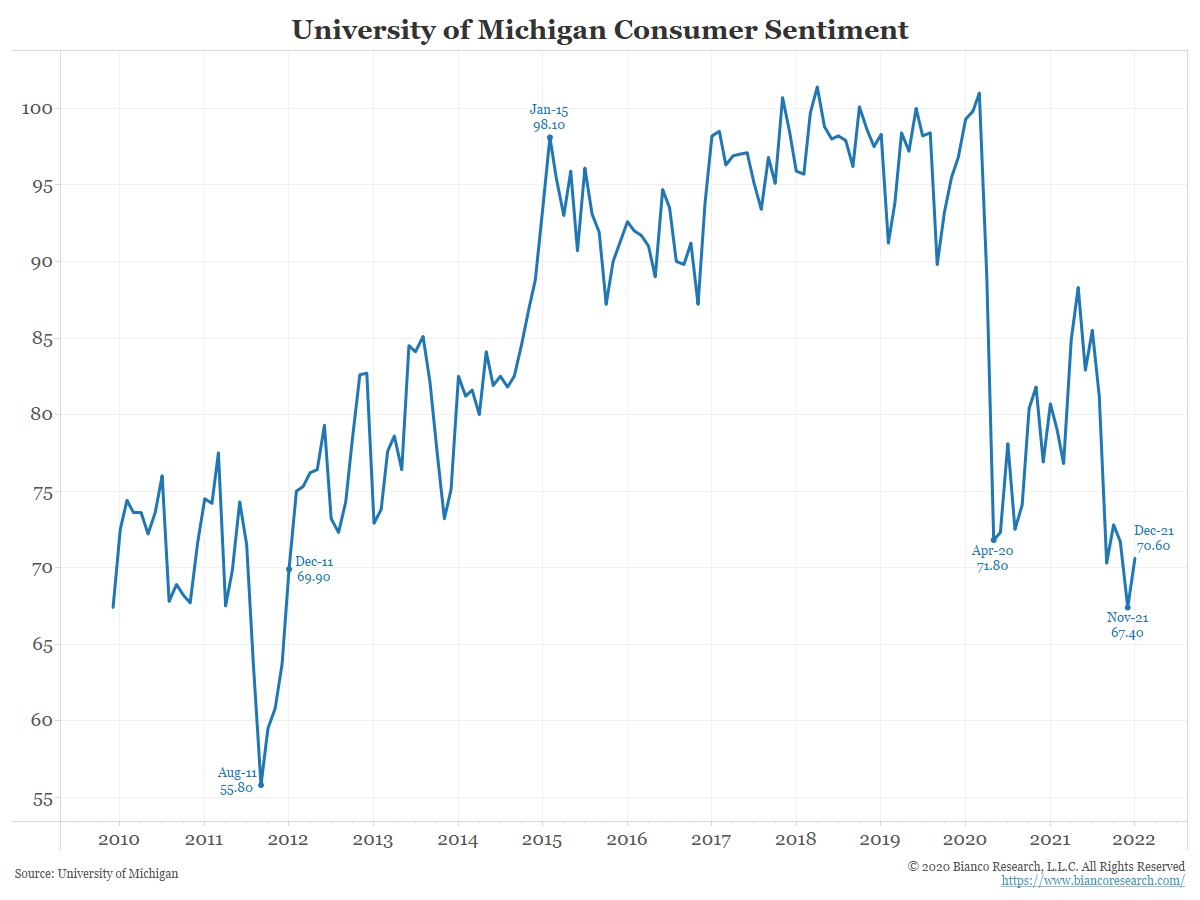
1/8
Yes, the stock market rally has been very narrow. And yes, since the last stimulus check went out/inflation surged (March 15), inflation has beaten nearly all stocks.
Yes, this is worrisome, and "muddies" the signal of a strong economy.
A thread to explain
@ritholtz
Yes, the stock market rally has been very narrow. And yes, since the last stimulus check went out/inflation surged (March 15), inflation has beaten nearly all stocks.
Yes, this is worrisome, and "muddies" the signal of a strong economy.
A thread to explain
@ritholtz
2/8
97% of stocks were >200d MA in mid-April. While the overall SPX climbed and stayed well above its own 200d MA, the pct of stocks above their 200d MA steadily declined.
This is a sign that the rally through most of the year was being led by fewer and fewer stocks.
97% of stocks were >200d MA in mid-April. While the overall SPX climbed and stayed well above its own 200d MA, the pct of stocks above their 200d MA steadily declined.
This is a sign that the rally through most of the year was being led by fewer and fewer stocks.

3/8
The following chart breaks the S&P 500 into ten deciles by mkt cap starting on March 15 (Last stimmy check, inflation takes off).
The 10th decile (largest), provided the best returns over this period. The smallest (decile 1) actually lost money the last 9 1/2 months.
The following chart breaks the S&P 500 into ten deciles by mkt cap starting on March 15 (Last stimmy check, inflation takes off).
The 10th decile (largest), provided the best returns over this period. The smallest (decile 1) actually lost money the last 9 1/2 months.

4/8
The 5 largest stocks in green (AAPL, GOOG, MSFT, TSLA, NVDA), the return of the other 495 stocks (brown) and the equal-weighted S&P 500 index (cyan).
Take out the five stocks and the other 495 underperform the index by 550 bps! This is massive!
The 5 largest stocks in green (AAPL, GOOG, MSFT, TSLA, NVDA), the return of the other 495 stocks (brown) and the equal-weighted S&P 500 index (cyan).
Take out the five stocks and the other 495 underperform the index by 550 bps! This is massive!

5/8
Moving beyond the S&P 500, the picture changes dramatically.
The MSCI ACWI ex-US (purple), the Midcap Index (green), and the Russell 2000 Small-Cap Index (brown) all failed to match the rise of inflation since March 15, with the Russell 2000 losing money over this period.
Moving beyond the S&P 500, the picture changes dramatically.
The MSCI ACWI ex-US (purple), the Midcap Index (green), and the Russell 2000 Small-Cap Index (brown) all failed to match the rise of inflation since March 15, with the Russell 2000 losing money over this period.

6/8
Since March 15, the RTY underperformed the SPX by 24.95% (top panel). This is the 2nd worst 210-day period since the index’s inception in 1978.
Only the underperformance in late 1998, following the sharp sell-off in stocks around the failure of LTCM, was larger.
Since March 15, the RTY underperformed the SPX by 24.95% (top panel). This is the 2nd worst 210-day period since the index’s inception in 1978.
Only the underperformance in late 1998, following the sharp sell-off in stocks around the failure of LTCM, was larger.

7/8
These charts show a stk mkt driven by a handful of the largest stocks.
The smallest SPX, midcap, small-cap, and the world ex-US all failed to beat inflation.
Many say stocks are a good inflation hedge. This year, that has only been the case for a small number of stocks.
These charts show a stk mkt driven by a handful of the largest stocks.
The smallest SPX, midcap, small-cap, and the world ex-US all failed to beat inflation.
Many say stocks are a good inflation hedge. This year, that has only been the case for a small number of stocks.
8/8
Others proclaim the big rally in stocks signals a strong economy. However, the most economically sensitive of the indices, the smallcap Russell 2000, has lost money in the last 9 1/2 months (since stimmy checks).
When viewed this way, the market’s message gets very muddied.
Others proclaim the big rally in stocks signals a strong economy. However, the most economically sensitive of the indices, the smallcap Russell 2000, has lost money in the last 9 1/2 months (since stimmy checks).
When viewed this way, the market’s message gets very muddied.
• • •
Missing some Tweet in this thread? You can try to
force a refresh















